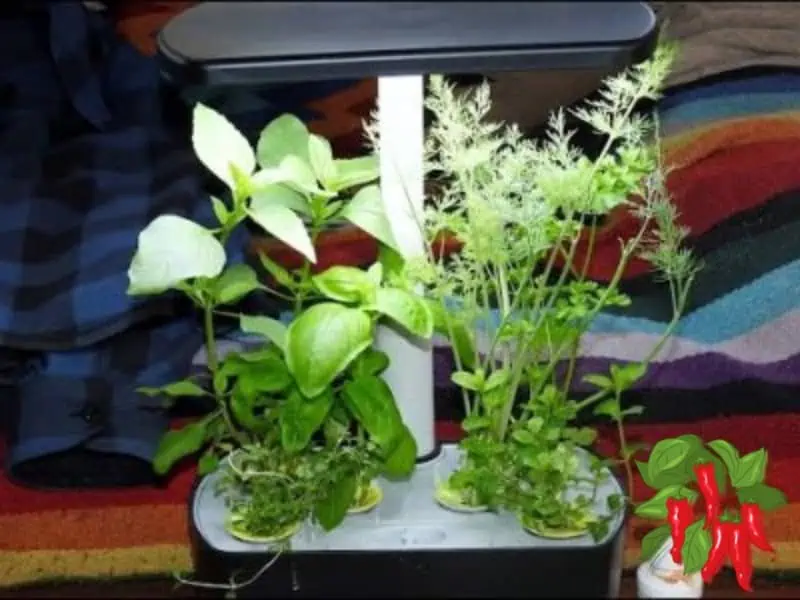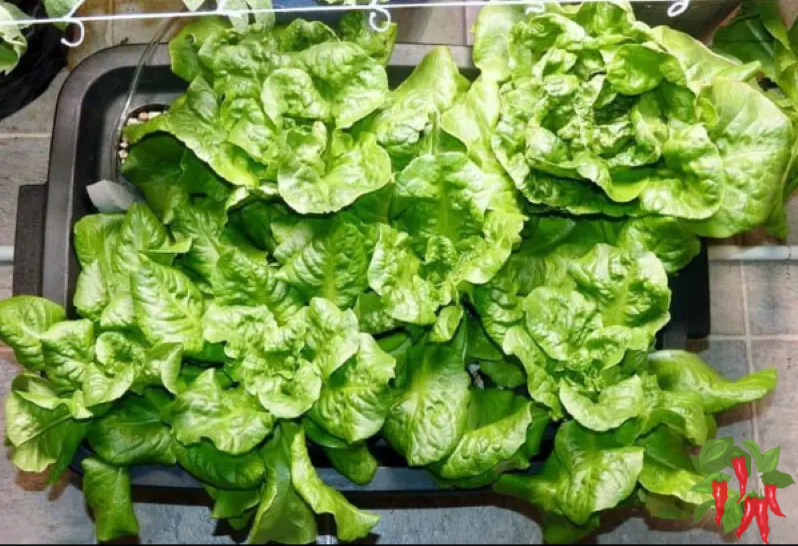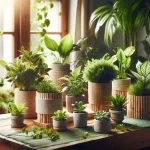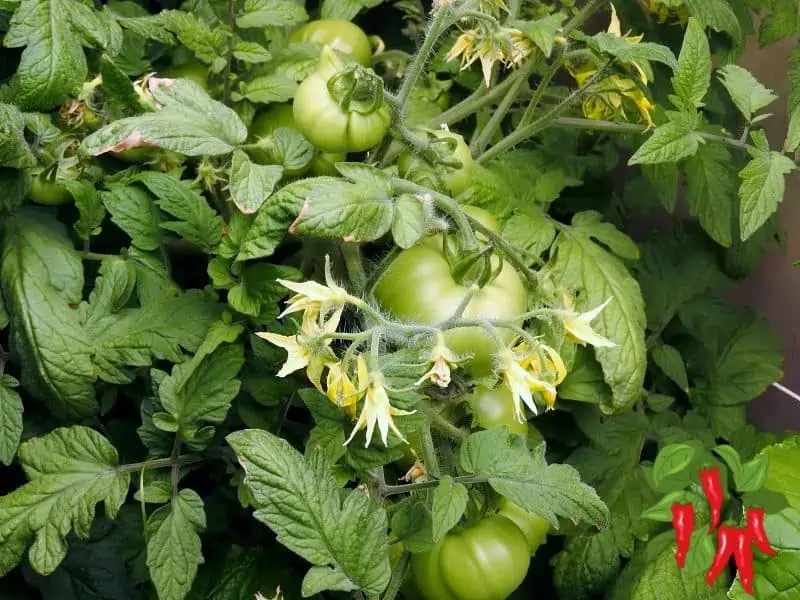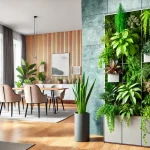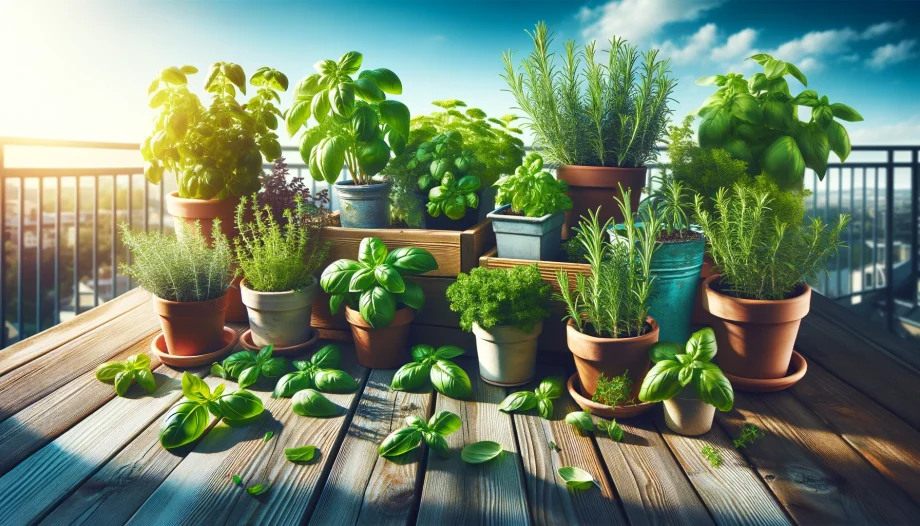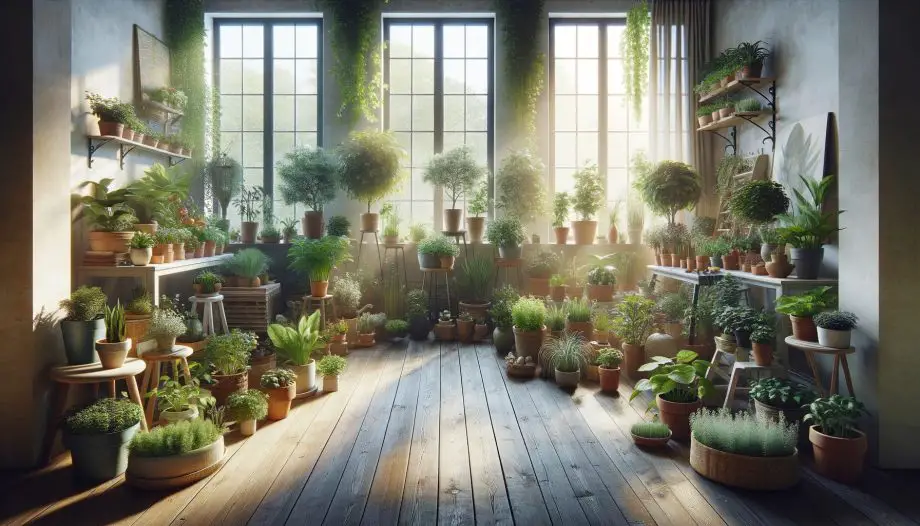This post may contain affiliate links. If you buy something from one of our links we may earn a commission. Thanks
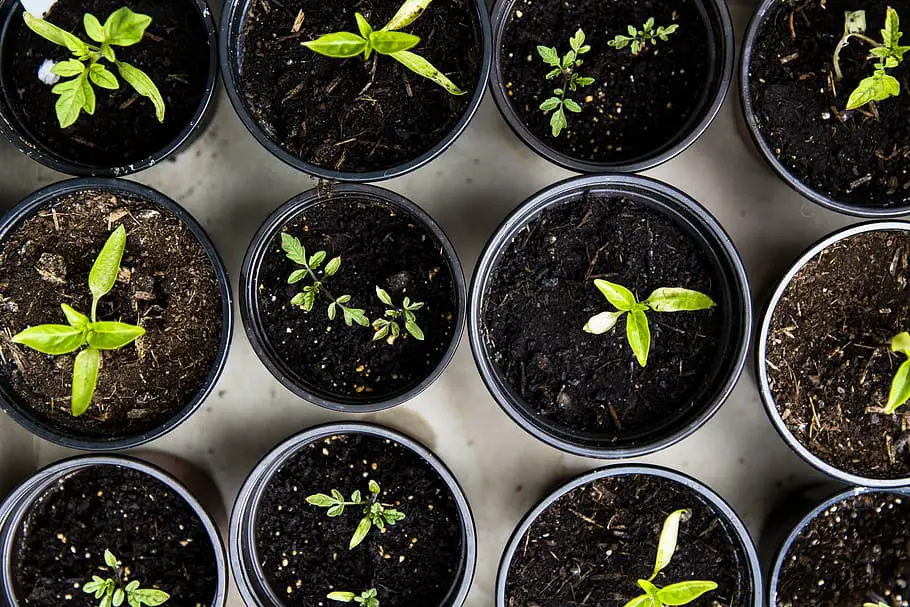
Discover the joy of urban gardening for beginners! Learn essential tips, overcome common challenges, and transform your small space into a green haven.
Ever dreamed of cultivating your own little green haven amidst the concrete jungle?
Well, urban gardening for beginners is your ticket to transforming that dream into reality!
It’s all about turning your balcony, rooftop, or even your living room into a thriving garden oasis.
From growing your own fresh herbs to nurturing beautiful flowers, urban gardening opens up a world of possibilities.
So, let’s embark on this green adventure together and uncover the joy of urban gardening for beginners!
Urban Gardening for Beginners
Welcome to the world of urban gardening for beginners! If you’ve ever thought that city living means giving up the pleasure of digging your hands into the soil and growing your own plants, think again.
In this guide, we’ll explore everything from the basics of urban gardening to the different types of city gardens you can create.
We’ll also delve into essential tools, a step-by-step guide to starting your own urban garden, and how to tackle common challenges.
Plus, we’ve included a handy FAQ section to answer your burning questions. So, whether you have a spacious balcony or just a sunny windowsill, let’s embark on this green adventure together!
Definition of Urban Gardening
Urban gardening, as the name suggests, is the practice of cultivating, processing, and distributing food in or around a village, town, or city.
It’s all about making the most of the space you have, whether that’s a balcony, a rooftop, a small yard, or even just a windowsill.
Urban gardening encompasses a wide variety of practices and garden types, from fruit and vegetable gardens to ornamental gardens, and even includes indoor plant collections.
It’s a fantastic way to bring a touch of nature into your urban living space, and it’s something anyone can try, no matter how green (or not) your thumbs are!
Importance and Benefits of Urban Gardening
Urban gardening is more than just a hobby or a pleasant way to pass the time. It has a host of benefits that can significantly improve your quality of life.
For starters, it’s a great way to ensure you have access to fresh, healthy produce.
Growing your own fruits and vegetables means you know exactly where your food comes from and how it’s grown.
But the benefits of urban gardening go beyond the plate. It’s also a fantastic way to improve your mental and physical health.
Gardening is a form of exercise, and spending time in nature, even if it’s just a small garden, can reduce stress and improve mood.
Moreover, urban gardening can help to improve the environment. Plants absorb carbon dioxide and release oxygen, helping to clean the air around them.
They can also help to reduce the urban heat island effect, a phenomenon where urban areas are significantly warmer than their rural surroundings due to human activities.
Finally, urban gardening can help to foster a sense of community. Community gardens are a great way to bring people together, encourage cooperation, and make our urban spaces more pleasant and attractive places to live.
Getting Started with Urban Gardening
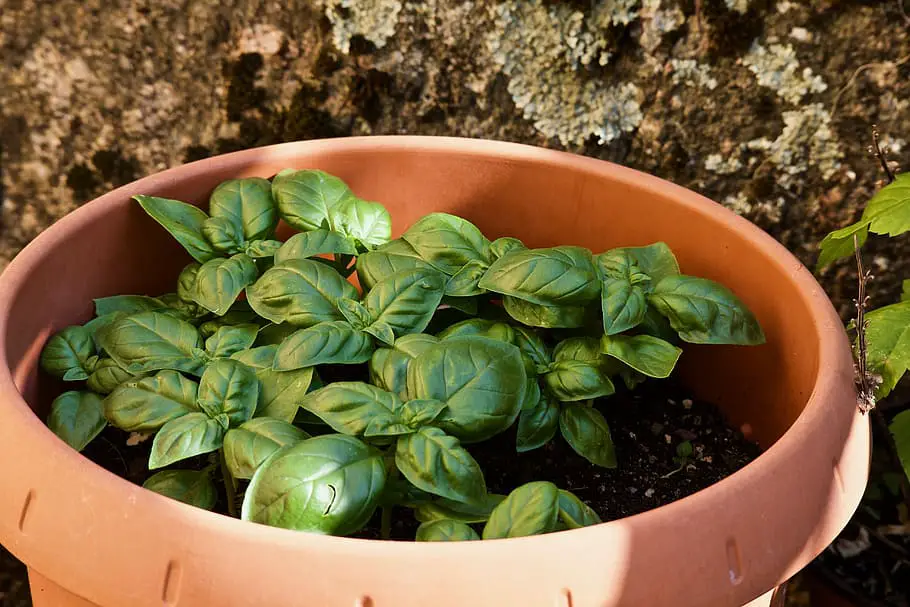
Ready to roll up your sleeves and start your urban gardening journey? Fantastic! Getting started with urban gardening might seem a bit daunting at first, especially if you’re new to the world of gardening.
But don’t worry, we’re here to guide you every step of the way. From understanding the basics to choosing the right location and selecting suitable plants, we’ll cover it all.
So, let’s get started and turn your urban space into a thriving green oasis!
Understanding the Basics
Before you start planting, it’s important to understand a few basic principles of gardening.
First, plants need sunlight to grow, so you’ll need to consider the light conditions in your space.
Some plants need full sun, while others can tolerate shade. Second, different plants have different soil and water needs.
Some plants prefer well-draining soil, while others prefer a more moist environment.
Understanding these basics will help you choose the right plants for your space and care for them properly.
Choosing the Right Location
The location of your urban garden is crucial. You’ll need to consider factors like sunlight, wind, and accessibility.
If you’re gardening on a balcony, for example, you’ll need to consider how much sun the balcony gets each day, and whether it’s exposed to strong winds that could damage plants.
If you’re gardening indoors, you’ll need to consider which rooms get the most light. Remember, the location doesn’t have to be large.
Even a small windowsill can be a good spot for a few potted herbs or flowers.
Selecting Suitable Plants
Once you’ve got a handle on the basics and chosen your location, it’s time to select your plants. This is where you can really get creative!
Think about what you want from your garden. Are you interested in growing your own vegetables? Or would you prefer a selection of colorful flowers? Maybe you’d like a mix of both.
Remember to consider the conditions of your chosen location when selecting your plants.
Some plants need lots of sunlight, while others prefer shade. You can use an LED grow light to provide supplemental lighting.
Some can tolerate windy conditions, while others need a more sheltered spot. And of course, different plants have different water and soil needs.
Don’t be afraid to ask for advice at your local garden center or nursery. They can help you choose plants that are suitable for your space and conditions.
And remember, gardening is a learning process. Don’t be discouraged if not everything goes to plan the first time.
With a bit of patience and perseverance, you’ll soon have a thriving urban garden!
Types of Urban Gardens
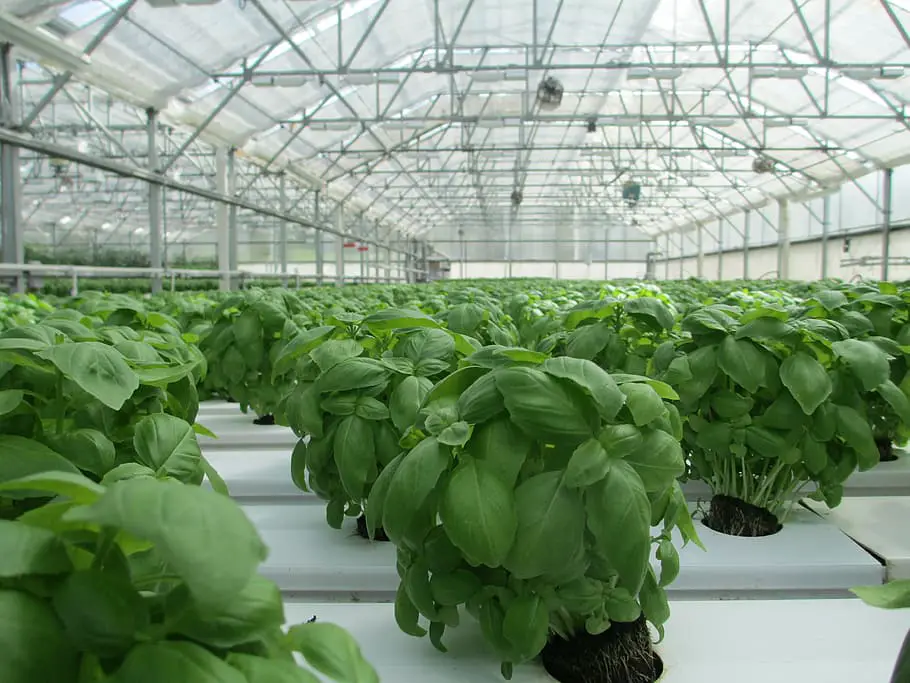
Think urban gardening is limited by space? Think again! One of the most exciting aspects of urban gardening is the variety of forms it can take.
From container gardens on your balcony to vertical gardens on your walls, the possibilities are endless.
In this section, we’ll explore different types of urban gardens that you can create, no matter how much (or how little) space you have.
So, let’s get creative and discover the type of urban garden that’s perfect for you!
Container Gardening
Container gardening is a fantastic option for urban dwellers. It’s all about growing plants in pots, planters, or other containers instead of in the ground.
The beauty of container gardening is its versatility. You can grow a wide variety of plants, from flowers to herbs to vegetables, and you can arrange your containers in a way that makes the best use of your space.
Plus, containers are portable, so you can move your plants around to take advantage of changing light conditions or bring them indoors when the weather gets too cold.
Vertical Gardening
Vertical gardening is a great solution for small spaces. It involves growing plants upwards on a wall or trellis, rather than outwards across the ground.
This can be a great way to maximize your growing space, and it can also create a beautiful green feature wall.
You can use vertical gardening to grow a variety of plants, including herbs, flowers, and even some types of fruits and vegetables.
Rooftop Gardening
If you’re lucky enough to have access to a rooftop, why not turn it into a garden? Rooftop gardens can be a wonderful way to make use of unused space, and they can also provide a great view!
You can create a rooftop garden using containers, or you can install raised beds. Just be sure to check the weight capacity of your roof and consider factors like wind exposure.
Balcony Gardening
Balcony gardening is a popular choice for apartment dwellers. Even a small balcony can be transformed into a lush, green space with the right plants and layout.
Consider using a mix of containers and vertical gardening techniques to make the most of your space.
And don’t forget to consider the light conditions on your balcony when choosing your plants.
Indoor Gardening
No outdoor space? No problem! Indoor gardening is a great way to bring some greenery into your home.
You can grow a variety of plants indoors, from decorative houseplants to herbs for your kitchen.
Just make sure to place your plants in a spot where they’ll get enough light, and be mindful of their watering needs.
Hydroponics
Hydroponics is a method of growing plants without soil. Instead, the plant’s roots are submerged in a nutrient-rich water solution.
This can be a great option for urban gardeners, as it allows you to grow plants indoors, without the need for a lot of space.
Plus, hydroponic systems can be quite productive, allowing you to grow a lot of plants in a small area.
It’s a bit more technical than some other types of gardening, but it can be a fun and rewarding challenge if you’re up for it!
Essential Tools and Materials for Urban Gardening
Ready to get your hands dirty? Before you start planting, you’ll need to gather some essential tools and materials.
Don’t worry, you won’t need a shed full of equipment to start an urban garden. Just a few basics will do.
In this section, we’ll go over everything you need to start your urban gardening journey, from containers and pots to soil, seeds, and essential gardening tools.
Let’s gear up and get ready to garden!
Containers and Pots
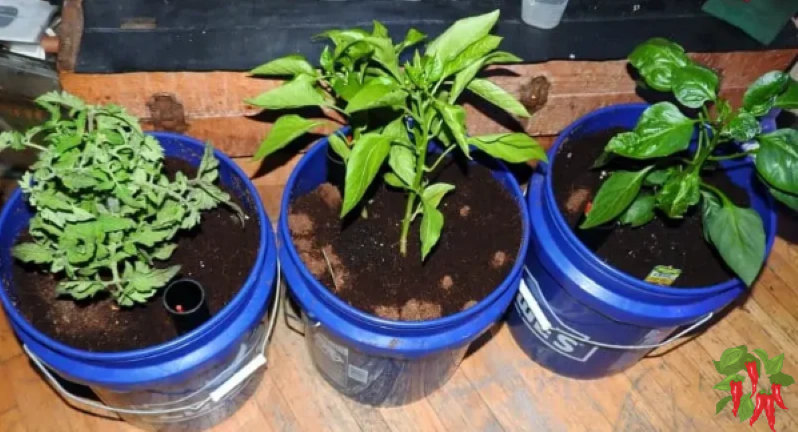
When it comes to urban gardening, containers, and pots are your best friends. They come in all shapes and sizes, so you can choose the ones that best fit your space and the plants you want to grow.
Smaller pots are great for herbs and flowers, while larger containers can accommodate vegetables like tomatoes and peppers.
Remember to choose containers with drainage holes to prevent waterlogging, and consider the material of the container as well.
Plastic pots are lightweight and inexpensive, while terracotta pots are more durable and provide good insulation for plant roots.
Soil and Compost
Good soil is the foundation of a healthy garden. For container gardening, it’s best to use a high-quality potting mix, which is lighter and better draining than regular garden soil.
In fact, you don’t want to use garden soil in pots at all. It compacts too much and may contain bugs or diseases.
Coco coir is a fantastic and renewable growing medium that is becoming very popular.
You can also improve your soil by adding compost, which provides essential nutrients for your plants.
Making your own compost at home is a great way to recycle kitchen scraps and reduce waste, but you can also buy ready-made compost from garden centers.
Seeds and Plants
Choosing whether to start from seeds or plants depends on your personal preference and the type of plant you want to grow.
Starting from seeds is usually cheaper and offers a wider variety of plant options, but it also requires more time and care.
Buying young plants, or seedlings, is a quicker and easier way to start, especially for beginners.
Either way, make sure to choose varieties that are suitable for your climate and the specific conditions of your garden.
Gardening Tools
You don’t need a lot of tools to start an urban garden, but a few basics will make your gardening tasks easier.
A trowel is useful for planting and potting, while a watering can with a long spout is essential for watering your plants.
If you’re growing plants in larger containers or raised beds, you might also find a hand fork and pruners useful.
And of course, don’t forget a pair of gardening gloves to protect your hands!
Step-by-Step Guide to Creating an Urban Garden
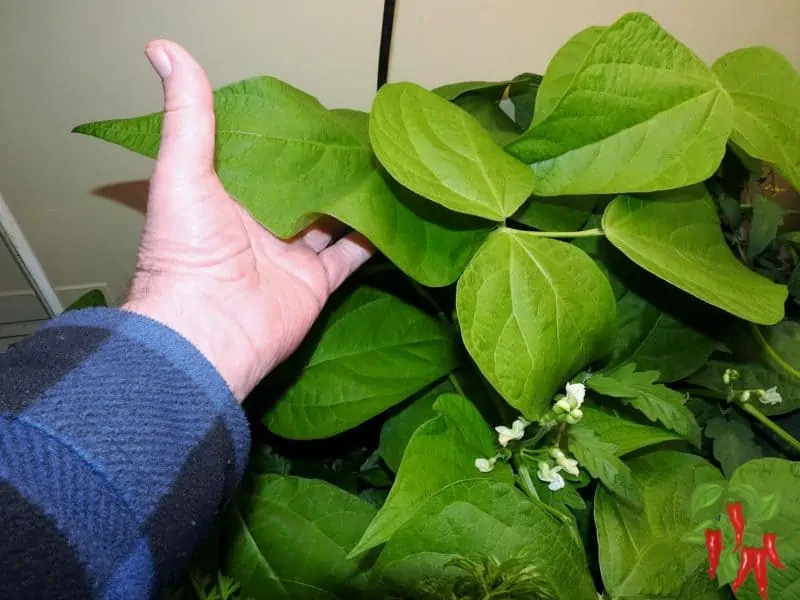
Alright, now that we’ve covered the basics and gathered our tools, it’s time to get our hands dirty and start creating our urban garden! But where do we start?
Don’t worry, we’ve got you covered. In this section, we’ll walk you through a step-by-step guide to creating your urban garden, from planning your garden to planting and maintenance.
So, let’s put on our gardening gloves and get started!
Planning Your Garden
The first step in creating your urban garden is planning. Start by assessing your space. How much sunlight does it get? Is it exposed to wind or other elements?
This will help you decide what type of garden you can create and what plants you can grow.
Next, think about what you want to grow. Are you interested in growing vegetables, herbs, flowers, or a mix?
Remember to choose plants that are suitable for your space and climate. Finally, sketch out a plan of your garden. This doesn’t have to be a detailed blueprint, just a rough idea of where each plant will go.
Preparing the Garden Space
Once you’ve planned your garden, it’s time to prepare your space. If you’re using containers, make sure they have drainage holes and fill them with potting mix.
If you’re creating a larger garden on a balcony or rooftop, you might need to install raised beds or larger planters.
Remember to position your garden where it will get the right amount of sunlight for the plants you’re growing.
Planting
Now comes the fun part, planting! If you’re starting from seeds, follow the instructions on the seed packet for how deep to plant them and how far apart.
If you’re planting seedlings, dig a hole in the soil that’s big enough for the root ball, place the plant in the hole, and fill in around it with soil.
Make sure to water your plants thoroughly after planting.
Maintenance and Care
Once your garden is planted, it’s important to take care of it. This means watering your plants regularly, but be careful not to overwater.
Most plants prefer to dry out slightly between waterings. You’ll also need to feed your plants with compost or suitable plant food to ensure they get the nutrients they need.
And don’t forget about pest control. Keep an eye out for any insects or diseases that could harm your plants, and take action at the first sign of trouble. With a little care and attention, your urban garden will thrive!
Challenges and Solutions in Urban Gardening
While urban gardening is an exciting and rewarding endeavor, it’s not without its challenges.
From limited space to lack of sunlight, urban gardeners often have to get creative to overcome these obstacles.
But don’t let that deter you! In this section, we’ll discuss some common challenges you might face when starting your urban garden and provide practical solutions to help you overcome them.
So, let’s tackle these challenges head-on and keep our gardens flourishing!
Limited Space
One of the biggest challenges of urban gardening is dealing with limited space. But don’t worry, a small space doesn’t mean you can’t have a lush, productive garden!
The key is to think vertically. Use wall-mounted planters, hanging baskets, or trellises to take advantage of vertical space.
You can also use multi-tiered plant stands to fit more plants into a small area. And remember, even a single windowsill can be a productive garden with the right plants!
Lack of Sunlight
Lack of sunlight can be another challenge for urban gardeners, especially those in apartments with limited outdoor space.
But again, there’s a solution. Many plants, including herbs like parsley and mint, and vegetables like lettuce and spinach, can tolerate partial shade.
For indoor spaces, consider using grow lights to supplement natural light. And remember, light conditions can change throughout the year, so be prepared to move your plants around as needed to give them the light they need.
Watering Issues
Watering can be a tricky issue in urban gardens. Overwatering is a common problem, especially for indoor plants.
Remember, most plants prefer to dry out slightly between waterings, so it’s better to err on the side of underwatering.
On the other hand, plants in small containers or in sunny, windy locations can dry out quickly and may need to be watered more frequently.
The key is to get to know your plants and their watering needs. Stick your finger into the soil; if it’s dry an inch or so below the surface, it’s time to water.
Aerogarden Hydroponic system – Great for Beginners

If you’re new to gardening or simply want a more hands-off approach, the AeroGarden hydroponic system is a fantastic option.
This innovative system takes a lot of the guesswork out of gardening, making it a great choice for beginners. But what makes it so special? Let’s dive in and find out!
Great for Beginners
The AeroGarden hydroponic system is a fantastic choice for beginners. Why? Because it simplifies the gardening process.
The system is designed to provide your plants with the perfect amount of light, water, and nutrients, so you don’t have to worry about overwatering or underwatering.
Plus, it comes with a control panel that tells you when to add water and plant food, and even when to replace the grow lights, making it almost foolproof. It’s like having a green thumb at the push of a button!
Great for Small Spaces
Another advantage of the AeroGarden system is its compact size. It’s designed to fit on a countertop, making it perfect for those with limited space.
Despite its small size, it’s surprisingly productive. Depending on the model, you can grow anywhere from 3 to 24 plants at a time, so you can have a variety of fresh herbs, salad greens, or even cherry tomatoes right at your fingertips.
Built-in Light: Place it Anywhere
One of the standout features of the AeroGarden system is its built-in grow lights.
These full-spectrum LED lights are tailored to the specific needs of plants, promoting fast, healthy growth.
Because of this built-in light system, you can place your AeroGarden anywhere in your home, regardless of natural light conditions.
Whether you want to brighten up a dim corner of your kitchen or add some greenery to your home office, the AeroGarden makes it possible.
FAQs
Still have questions about urban gardening? You’re not alone! It’s a vast topic and there’s always more to learn.
That’s why we’ve compiled this FAQ section, where we answer some of the most common questions beginners have about urban gardening.
From the benefits of urban gardening to the essentials you’ll need to get started, we’ve got you covered.
So, let’s dive into your burning questions and shed some light on the world of urban gardening!
Q: What are two benefits of urban gardening?
A: Urban gardening offers numerous benefits, but two of the most significant are improved mental health and access to fresh produce.
Gardening can be a therapeutic activity, helping to reduce stress and improve mood.
Plus, growing your own fruits and vegetables ensures you have access to fresh, healthy food, and it’s incredibly satisfying to eat something you’ve grown yourself!
Q: Why is it difficult to have a garden in an urban area?
A: Urban gardening can be challenging due to factors like limited space, lack of sunlight, and restrictions on outdoor areas in some apartment buildings.
However, with creative solutions like vertical gardening, container gardening, and indoor gardening, these challenges can be overcome.
Q: What do you need for an urban garden?
A: To start an urban garden, you’ll need a few basic supplies: containers or pots, potting soil, seeds or plants, and basic gardening tools like a trowel and watering can. Y
ou’ll also need a suitable space with enough light for your plants to grow, whether that’s a balcony, a windowsill, or an indoor area with a grow light.
Q: What are simple gardens for beginners?
A: For beginners, container gardens are a great place to start. They’re easy to set up and maintain, and they’re perfect for small spaces.
You can grow a variety of plants in containers, from herbs and vegetables to flowers.
Another good option for beginners is a salad garden. Many salad greens are easy to grow and can be harvested repeatedly throughout the season.
Conclusion

As we wrap up our guide to urban gardening for beginners, it’s time to reflect on what we’ve learned and look forward to your gardening journey.
From understanding the basics to tackling common challenges, we’ve covered a lot of ground (pun intended!).
But remember, the most important part of gardening is to enjoy the process. So, let’s conclude our guide and get ready to dig in!
Encouragement for Beginners
If you’re a beginner, it’s normal to feel a bit overwhelmed at the prospect of starting your own urban garden.
But remember, every gardener was a beginner once, and the best way to learn is by doing.
Don’t be afraid to get your hands dirty and make some mistakes along the way. That’s all part of the gardening journey.
Start small, be patient, and most importantly, have fun with it. With time and practice, you’ll see your skills grow along with your plants.
Impact of Urban Gardening
Urban gardening may seem like a small act, but it can have a big impact.
On a personal level, it can improve your mental and physical health, provide a sense of accomplishment, and even save you money on groceries.
On a broader scale, urban gardening can help to green our cities, improve air quality, reduce the urban heat island effect, and even contribute to local food security.
By starting an urban garden, you’re not just creating a green space for yourself, but also contributing to a greener, healthier urban environment.
So go ahead, grab that trowel, and start making a difference, one plant at a time!
The Beginner’s Guide to Starting a Backyard Urban Garden
Visit my Amazon Influencer Page for videos and gardening products Grow Your Own Garden

